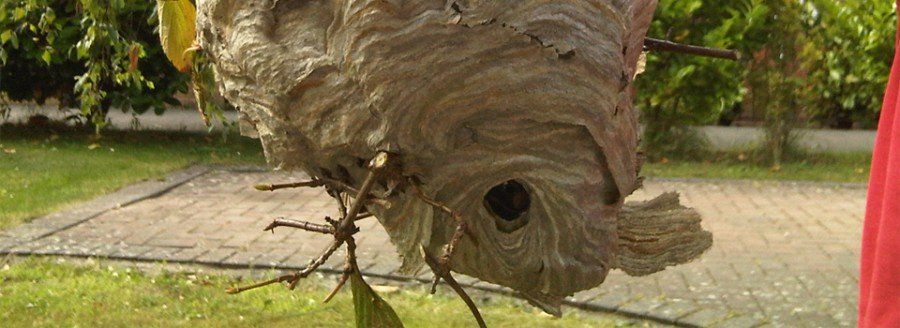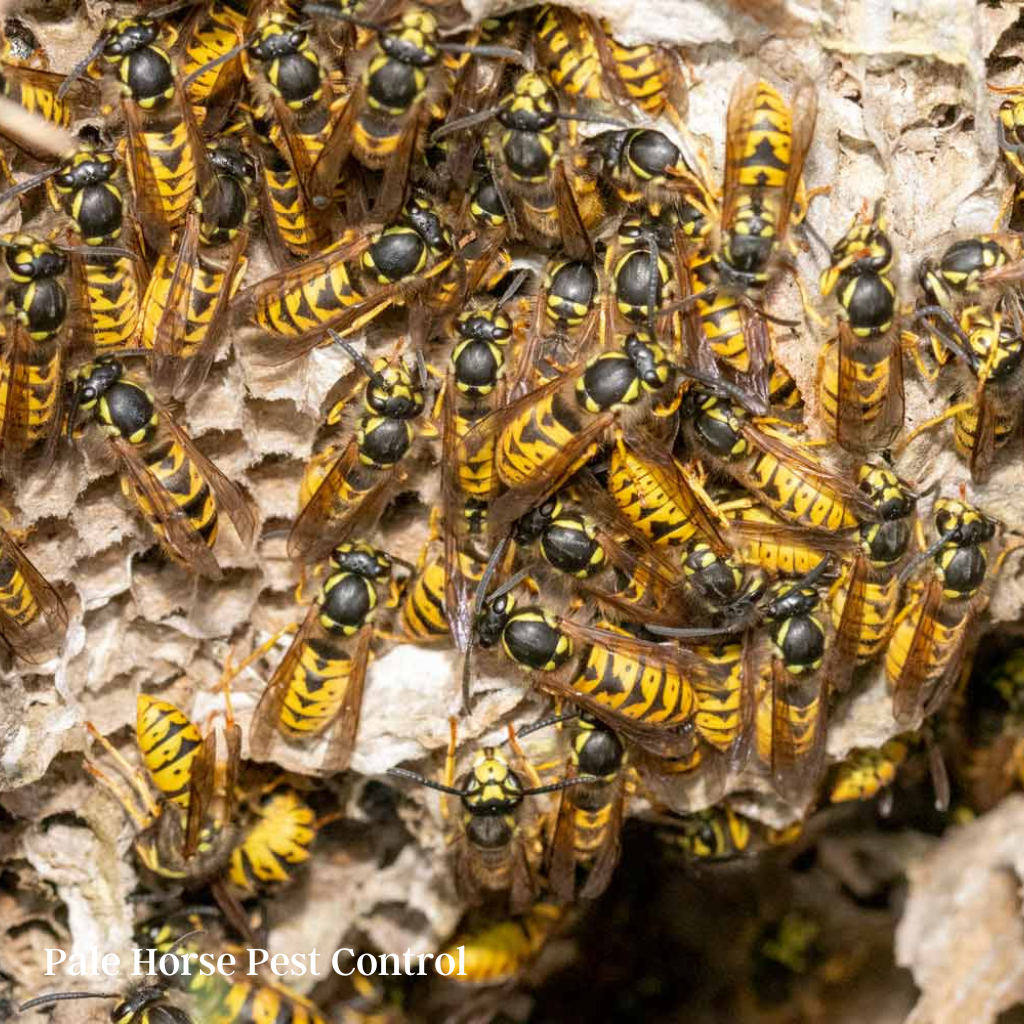Bristol Wasp Control and Wasp Nest Removal
Protect your Bristol home or business from wasps with professional BPCA Accredited wasp nest removal experts from Pale Horse Pest Control. Same-day wasp nest removal in Bristol and beyond, all GUARANTEED and Trading Standards Approved. Book a Free Quote
WE COVER - BRISTOL - BATH - NORTH SOMERSET - SOUTH GLOUCESTERSHIRE - 24/7
Book Wasp Control Bristol & Bath Near Me
Why Choose Us for Bristol Wasp Control
Wasps are a common summer pest in Bristol, building nests in lofts, gardens, and eaves across neighbourhoods like Clifton, Bedminster, and Southville.
The Wasps' painful stings and aggressive behaviour when disturbed make professional Bristol wasp control essential. Pale Horse Pest Control, a BPCA-accredited provider, offers fast, safe, and eco-friendly wasp nest removal 24/7 to keep your property pest-free.
Understanding Wasps in Bristol

Wasps, including common wasps (Vespula vulgaris) and German wasps (Vespula germanica), are social insects that thrive in Bristol’s urban and suburban areas.
Wasps build paper-like nests from chewed wood pulp, often in lofts, sheds, or under eaves. A single nest can house 3,000–10,000 wasps, with mega nests reaching up to 100,000 in rare cases.
- Nest Locations: Common in roof spaces, wall cavities, and gardens in areas like Fishponds and Redland.
- Behaviour: Wasps are attracted to sugary foods and proteins, becoming more aggressive in late summer.
- Sting Risks: Multiple stings can cause pain or anaphylactic shock in allergic individuals.
European hornets are common in and around Bristol, and are larger but less aggressive, with nests containing fewer individuals (up to 700).
Risks of Wasp Infestations in Bristol
Wasp nests in Bristol homes or businesses pose several risks:
Stings: Painful and potentially life-threatening for those with allergies, with historical accounts of fatalities dating back to 2621 BC.
Structural Damage: Mature nests against plasterboard can weaken walls or ceilings, causing costly repairs.
Health Hazards: Wasps can contaminate food surfaces, spreading bacteria in kitchens or cafes.
Swarming: Disturbed nests can lead to aggressive swarming, especially in high-traffic areas like St Paul's.
Early wasp control in Bristol prevents these risks, ensuring safety for families, pets, and customers.
Professional Bristol Wasp Control with Pale Horse Pest Control
Pale Horse Pest Control offers expert wasp control in Bristol, using safe, BPCA-approved methods to eliminate nests and prevent reinfestation. Our services are tailored to Bristol’s unique urban challenges.
Our Wasp Control Process
1. Inspection: We locate nests in your Bristol property, assessing size and accessibility.
2. Treatment: We apply fast-acting insecticides (e.g., powder or spray) to eradicate the nest, ensuring safety.
3. Removal: Where possible, we remove treated nests to comply with regulations and prevent hazards.
4. Prevention: We provide advice on sealing entry points and reducing attractants.
Why Choose Us?
- BPCA-accredited with over 10 years of Bristol pest control experience
- Eco-friendly, family- and pet-safe treatments
- Same-day emergency service in Bristol
- Guaranteed results with free re-treatment if needed
Review: Pale Horse Pest Control removed a wasp nest from our Southville garden same day. Fast and professional!” – Laura, Bristol
How to Prevent Wasps in Bristol
Preventing wasp nests in your Bristol home or business reduces the need for control:
• Seal Entry Points: Close gaps in roofs, eaves, and walls, common in Bristol’s historic homes in Clifton.
• Remove Attractants: Secure bins and avoid leaving sugary foods or drinks exposed in gardens like those in Redland.
• Install Traps: Use pheromone-based wasp traps to lure wasps away from patios or BBQs.
• Regular Inspections: Schedule annual checks with Pale Horse to catch nests early, especially in spring.
• Avoid Disturbance: Stay calm around wasps and avoid sudden movements near wasps to prevent stings.
Case Study: Wasp Control in Bristol
In 2024, we treated a large wasp nest in a Bedminster loft. The homeowner reported buzzing and found wasps entering through a roof gap. Our team used a telescopic pole to apply insecticidal dust, eliminating the nest within the hour. We sealed the entry point and provided prevention tips, ensuring no recurrence.
Lesson: Early Bristol wasp control prevents dangerous infestations and property damage.
Serving Bristol and Beyond
We provide expert wasp control across Bristol, including Clifton, Bedminster, St Paul's, Fishponds, Easton, Southville, Redland, and surrounding areas like Bath and Portishead.
FAQ's - Frequently Asked Questions on Wasps & Hornets
How do I know if I have a wasp nest in Bristol?
Look for increased wasp activity, buzzing, or a paper-like nest in lofts, eaves, or gardens.
How to identify a wasp nest in Bristol?
To identify a wasp nest in Bristol, look for a greyish, papery structure, often in sheltered spots like lofts, eaves, sheds, or trees. It’s typically football-sized, with a textured surface and small entry holes where wasps are active. Listen for buzzing and watch for wasps flying in and out. Check gardens or quiet areas around your property, especially in summer. If unsure, contact a professional like Pale Horse Pest Control for safe inspection.
Are wasp control treatments safe?
Yes, our BPCA-approved, eco-friendly treatments are safe for families and pets.
How long does Bristol wasp control take?
Treatment takes 15-45 minutes, with full nest eradication within days.
Why are wasps common in Bristol?
Urban density, gardens, and mild summers attract wasps to areas like Fishponds.
Learn more about treating wasps nests in Bristol with the BPCA

